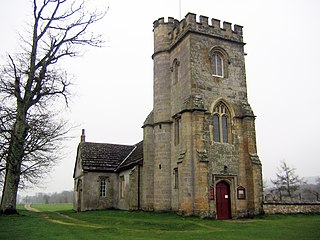Related Research Articles

A site of special scientific interest (SSSI) in Great Britain, or an area of special scientific interest (ASSI) in the Isle of Man and Northern Ireland, is a conservation designation denoting a protected area in the United Kingdom and Isle of Man. SSSI/ASSIs are the basic building block of site-based nature conservation legislation and most other legal nature/geological conservation designations in the United Kingdom are based upon them, including national nature reserves, Ramsar sites, Special Protection Areas, and Special Areas of Conservation. The acronym "SSSI" is often pronounced "triple-S I".
A special protection area (SPA) is a designation under the European Union Directive on the Conservation of Wild Birds. Under the Directive, Member States of the European Union (EU) have a duty to safeguard the habitats of migratory birds and certain particularly threatened birds. Together with special areas of conservation (SACs), the SPAs form a network of protected sites across the EU, called Natura 2000. Each SPA has an EU code – for example the North Norfolk Coast SPA has the code UK9009031.

Potterhanworth Wood is a 32.0 hectare woodland, close to the village of Potterhanworth in North Kesteven, Lincolnshire, England. Potterhanworth was known as Potter Hanworth until the 1950s. The site was notified as a Site of Special Scientific Interest in 1968. The site is also listed in the Nature Conservation Review.

Parham is a civil parish in the Horsham District of West Sussex, England. There was a village of Parham, around the parish church, but its few houses were destroyed in the early 19th century to create the landscaped park and gardens. The parish now consists of Parham Park and the farms and smaller settlements around it. The village is between Wiggonholt and Cootham, about 3 miles (4.8 km) south of Pulborough on the A283 road.

Rye Foreign is a small hamlet and civil parish in the Rother district of East Sussex, England. The hamlet is about 2 miles north-west of Rye, immediately to the east of the larger village of Peasmarsh. The name of the parish came about in 1247, when King Henry III reassumed control of Rye and Winchelsea from the Abbey of Fecamp, but left part of the area still under the Abbey: hence "Rye Foreign". There is no parish church, although the building still stands in secular use.

Hilgay Heronry is a 1.8-hectare (4.4-acre) biological Site of Special Scientific Interest south of Downham Market in Norfolk.

West Sedgemoor or West Sedge Moor is an area of the Somerset Levels, in Somerset, England, around 8 miles east of Taunton, which approximately coincides with the West Sedgemoor biological Site of Special Scientific Interest, a 1,016 hectare site notified as an SSSI in 1983. It is a flat, low-lying area of fields and meadows separated by water-filled rhynes and ditches. It is subject to controlled flooding in winter. It is drained by the River Parrett.

Waltham Abbey SSSI is a 34.2-hectare (85-acre) biological Site of Special Scientific Interest which is located within the Waltham Abbey Royal Gunpowder Mills at Waltham Abbey in Essex.

Allt y Gaer is a Site of Special Scientific Interest (SSSI) in Llangathen community, Carmarthenshire, Wales. It is a 3.5ha conifer woodland on the northern slopes of the Tywi Valley, which has SSSI protected designation because it holds the largest heronry in West Wales.

Sleightholme Dale, sometimes spelt in one word, Sleightholmedale, is a valley in the North York Moors in North Yorkshire, England. The dale is the middle section of the valley of Hodge Beck, below Bransdale and above Kirkdale.

Islington Heronry is a 1.3-hectare (3.2-acre) biological Site of Special Scientific Interest south-west of King's Lynn Norfolk.

Parham Park SSSI is a 263.3-hectare (651-acre) biological Site of Special Scientific Interest in the grounds of Parham Park, west of Storrington in West Sussex. It is a Nature Conservation Review site, Grade 2.

Hay-a-Park Gravel Pit is a Site of Special Scientific Interest, or SSSI, adjacent to the east side of the town of Knaresborough, North Yorkshire, England. Having been a disused and flooded quarry since the 1970s, it now consists of the large Hay-a-Park Lake and three smaller ponds, besides associated reedbeds, scrub, woodland and grassland. It was designated as a SSSI in 1995 because it supports a number of wintering birds, including a large flock of goosander. This site is "one of the most northerly inland breeding populations of reed warbler in Britain." Hay-a-Park was once part of a royal park, an early landowner being Edward II.
References
- ↑ English nature Retrieved 11 September 2009